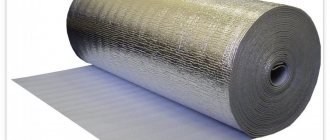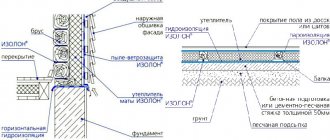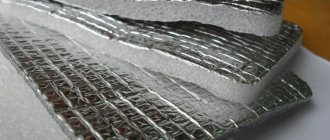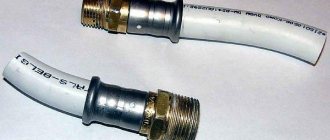Features of using propylene glycol
Propylene glycol has a freezing point of −60 °C and boils at 187.4 degrees. The temperature range of the liquid phase is 247 °C (water is only 100 degrees). Such a temperature range is not always needed, so solutions are used.
Propylene glycol is completely soluble in water. Aqueous solutions have a working temperature range depending on the concentration (see table below). The higher the percentage of propylene glycol, the lower the freezing point and the more expensive the coolant.
Based on the substance, multicomponent coolants are made. They may also include:
- Water softeners;
- Inhibitors;
- Anti-foaming agents;
- Additives for surface restoration;
- Anti-corrosion additives;
- Absorbents.
Propylene glycol does not produce a lot of vapor. Therefore, in the event of a leak, there is no need to completely replace the coolant in the system. It can be refilled.
The shelf life of propylene glycol and its solutions is 5 years or more if stored in sealed containers at temperatures above +55 degrees. The shelf life of coolants based on it depends on the composition of the components. It is indicated on the packaging or in the specification.
Polypylene glycol in 200 liter barrels.
How to properly use propylene glycol-based coolants
Propylene glycol-based coolants have a similar chemical composition, which differs in the percentage of alcohol content. Most often, such compositions are named after the manufacturer.
If antifreeze contains about 30% propylene glycol, it freezes at -13 °C, a 35% alcohol solution crystallizes at -20 °C, 40% at -25 °C, 75% solution at -65 °C WITH.
When replacing water with a propylene glycol-based composition, it is necessary to take into account some properties of antifreeze.
- Lower heat capacity and thermal conductivity. It is worth increasing the number of radiators, as well as purchasing a more powerful boiler. Often in private homes heating systems are installed that operate at half their capacity - in this case you can do without replacing the boiler.
- High viscosity. Make sure that the pipes have an internal diameter of at least 25 mm, and also install a larger circulation pump.
- Greater expansion coefficient. If the expansion tank is less than 10 liters, then it will need to be replaced with a larger one.
- High turnover. It is worth reducing the number of threaded connections, taps and bends, and also provide free access to existing connections in case of leakage.
If the technical parameters of the existing heating meet the new requirements, you can proceed to preparatory work:
- compact the bends, connections, tie-ins;
- completely drain the water from the heating system and rinse with caustic soda, it will remove rust and scale;
- remove all zinc parts;
- Additives can be added to antifreeze to protect copper parts;
- check the dirt trap twice as often;
- check the solution for alcohol concentration every two years;
- complete change of antifreeze every five years.
It is always worth thoroughly flushing the system if you are going to switch to another coolant.
Application
Propylene glycol and its solutions are used as a coolant in climate control equipment. They have a low freezing point, which is why they are also called antifreeze. Propylene glycol solutions and coolants based on it are used in:
- Chiller-fan coil systems;
- Solar vacuum and flat collectors;
- Heat pumps;
- Heating and hot water systems;
Pure propylene glycol is used in other areas:
- In the production of cosmetics;
- In the food industry;
- As a liquid solvent for electronic cigarettes;
- To moisten tobacco;
- When disinfecting premises;
- In the production of unsaturated polyester resins;
- As a plasticizer in the manufacture of polymer films.
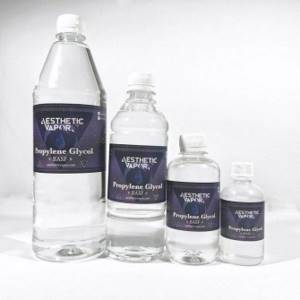
Propylene glycol in bottles for food use.
Propylene glycol technical
Propylene glycol is a colorless viscous liquid with a weak characteristic odor, a sweetish taste, and has hygroscopic properties. Propylene glycol, unlike ethylene glycol, is practically non-toxic and not dangerous if vapors are inhaled or accidentally ingested.
Propylene glycol has preservative, sterilizing and bactericidal properties.
Propylene glycol is a good solvent for various classes of compounds, and most low-molecular organic compounds containing oxygen and nitrogen are completely miscible with it: monohydric alcohols, ethylene and propylene glycols and their esters, acids, aldehydes, ketones, esters, amines and other nitrogen-containing compounds.
NPP Spetsavia LLC accepts orders for the production of propylene glycol, its packaging and shipment to the consumer. Detailed information can be found in the “Services” section. The production capacity of the enterprise at maximum load allows producing up to 200 tons of product per day.
Specifications
The density of propylene glycol is lower than that of ethylene glycol and glycerin, but higher than that of ethanol. The viscosity of propylene glycol is higher than that of ethylene glycol and monohydric alcohols, especially at low temperatures.
Comparative characteristics of ethylene glycol and propylene glycol.
| Index | Ethylene glycol | Propylene glycol | Comments |
| Flammability | low | low | |
| Degree of skin irritation caused | low | low | |
| Viscosity | low | higher than ethylene glycol | Propylene glycol causes large pressure loss in systems. |
| Carcinogenicity | No | No | |
| Susceptibility to biodegradation | destroyed in 10 - 30 days | it takes 20 - 30 days to destroy | |
| Freezing point shift when diluted with water | more efficient | less effective | A higher concentration of propylene glycol is needed to achieve the same freezing point as ethylene glycol. |
| Toxicity | High level of toxicity when taken orally | Toxicity levels are lower | |
| Chemical oxygen demand | low | higher than ethylene glycol | |
| Heat Transfer Efficiency | worse than propylene glycol | better than ethylene glycol | Ethylene glycol cannot transfer the same amount of heat as propylene glycol, so more ethylene glycol must be circulated in the system to transfer the same amount of energy at the same temperature. |
Application
Low-freezing coolants made on the basis of an aqueous solution of propylene glycol are widely used in various industries as antifreeze, including in heating, ventilation, air conditioning systems of residential buildings and public buildings, in cooling systems for food production, as well as in other heat exchange equipment in the temperature range from −40 °C to +108 °C.
The corrosive activity of propylene glycol is lower than that of most known aqueous solutions of salts and alcohols. This circumstance allows us to set low requirements for steel grades for equipment, which has a positive effect on its cost.
In the food industry, propylene glycol can act as a food additive (a moisture-retaining, softening and dispersing agent), and is used in the production of liquids for refilling electronic cigarettes, as well as in small quantities in the production of cosmetics.
Propylene glycol can be one of the components in the process of obtaining medicines. In addition, it is used for lubrication and preservation of food packaging machines, and is used as a plasticizer in the production of cellophane and polyvinyl chloride films.
Documentation
The following set of properly executed permits is available for propylene glycol:
- TU 6-09-2434-81 “Propylene glycol”
Technical propylene glycol is widely used as a non-freezing, environmentally friendly working fluid circulating in the circuits of various heat exchange systems for domestic and industrial purposes.
As a coolant, propylene glycol has excellent performance characteristics, and the price of this product, produced by NPP Spetsavia LLC, is within the range of market expectations of most consumers.
By its nature, propylene glycol is a unique chemical compound that makes it possible to expand in practice the whole range of consumer properties of special technical non-freezing (cooling) liquids due to the presence of the following qualities:
- excellent solubility in water in almost any percentage;
- influence on the freezing point of aqueous solutions depending on their concentration (volume percentage) in them;
- good hygroscopicity, i.e. the ability to absorb moisture, promoting drying processes;
- ability to dissolve both hydrophobic and hydrophilic compounds.
If a consumer needs to buy propylene glycol as a coolant, he should definitely pay attention to the presence of anti-corrosion and anti-foam additives in its composition, since in their absence this coolant can have a negative effect on all metal surfaces with which it comes into contact.
Coolants based on propylene glycol with a package of specially selected additives provide stable protection of heat exchange circuits from corrosion processes and the formation of deposits over a long period of time, which, in turn, is directly related to the saving of material and financial resources planned for potential repair work and forced maintenance .
A potential buyer should take into account that the propylene glycol coolant is made on the basis of raw materials with reduced toxicity, therefore the selling price for this product differs from the coolant based on ethylene glycol.
By purchasing propylene glycol coolant, the price of which, in addition, significantly depends on the volume of purchase, packaging and other technical parameters, the buyer can confidently use it in heat exchange systems with increased requirements for environmental safety criteria.
You can buy propylene glycol or find out the price of propylene glycol, get detailed information about this product, clarify the terms of cooperation, place an order or choose an acceptable feedback method in the “Contacts” section.
Physico-chemical properties of propylene glycol
| Indicator | Meaning |
| Chemical formula | C3H8O2 |
| Molar mass | 76.09 g/mol |
| Density | 1.0363 g/cc |
| Dynamic viscosity | 0.056 Pa s |
| Kinematic viscosity (at 20 °C) | 0.054 cc/s |
| Melting temperature | −60 °C |
| Boiling temperature | 187.4 °C |
| Flash point | 101.7 °C |
| Flash point | 104.4 °C |
| Auto-ignition temperature | 421 °C |
| Specific heat | 2483 J/(kg K) |
| Thermal conductivity | 0.218 W/(m K) |
| Steam pressure | 10.7 Pa |
| Specific heat of evaporation | 914 kJ/kg |
Flash point is the lowest temperature of a volatile condensed substance at which vapors above the surface of the substance are capable of flashing in air under the influence of an ignition source, but stable combustion does not occur after removal of the ignition source.
Wikipedia
Ignition temperature is the lowest temperature of a substance at which vapors above the surface of a flammable substance are released at such a rate that when exposed to an ignition source, ignition is observed.
Wikipedia
Propylene glycol based coolant
- insures the system against rupture;
- the volume during freezing increases by only 0.1%;
- provides the highest level of safety after water;
- not dangerous even with prolonged inhalation of vapors;
- non-corrosive;
- good thermophysical properties;
- has bactericidal and sterilizing properties.
- high cost (paid off by minimal repair costs, safety and the ability not to connect to central heating systems).
Freezing point of aqueous solutions of propylene glycol
| Concentration | Temperature | Density |
| Propylene glycol | °C | at 20°C |
| 0.2 | -6 | 1.014 |
| 0.25 | -10 | 1.019 |
| 0.31 | -15 | 1.023 |
| 0.36 | -20 | 1.028 |
| 0.42 | -25 | 1.032 |
| 0.45 | -30 | 1.035 |
| 0.5 | -35 | 1.038 |
| 0.55 | -45 | 1.04 |
| 0.6 | -55 | 1.042 |
| 0.65 | -57 | 1.043 |
| 0.7 | -58 | 1.044 |
| 0.7+ | -60 | 1,045+ |
Dependence of crystallization temperature on concentration
The graph of the dependence of the freezing temperature on the ethylene glycol content in the solution is not linear, but forms a curved line with a low point around 65%. To the right and left of this value the freezing temperature increases. Thus, for technical purity ethylene glycol (about 98%), it is only about -13 °C. Therefore, the working concentration range in industry is considered to be from 25 to 65% glycol; further increase in concentration is pointless and economically unprofitable. The table of values for ethylene glycol is as follows:
| Concentration, % | Crystallization start temperature, °C | Antifreeze density, g/cm3 |
| 65,3 | -65 | 1,086 |
| 63,1 | -60 | 1,083 |
| 58,0 | -50 | 1,078 |
| 52,6 | -40 | 1,071 |
| 45,6 | -30 | 1,063 |
| 36,4 | -20 | 1,051 |
| 26,4 | -10 | 1,034 |
Solutions of propylene glycol in water exhibit properties very close to those indicated.
Harm and toxicity to the body
According to the international classification, propylene glycol is an additive E1520. This means that it has been tested for a long time and its harm to the body has not been identified. But this only applies when consumed internally.
Propylene glycol is used in the manufacture of conventional and electronic cigarettes. And their smoking and vaping leads to lung cancer and the development of cardiovascular diseases. Scientists have not figured out which component causes these diseases.
It is possible that nicotine or other tar substances are to blame. But it may be that inhaling propylene glycol vapor is a negative factor . Therefore, when working with it and its solutions, it is recommended to observe safety precautions.
Glycerin based coolant
- environmentally friendly;
- not dangerous if vapors are inhaled;
- does not cause poisoning if accidentally ingested;
- inert to galvanized parts;
- cheaper than propylene glycol based coolant.
- the mass of glycerin coolant puts additional load on the equipment;
- viscosity is higher than that of glycol solutions;
- thermally unstable;
- foams heavily, increasing the risk of airing the system;
- When used, the requirements for gaskets (seals) and parts increase.
Safety precautions
When working with propylene glycol, the following rules must be observed:
- Store the substance in a hermetically sealed container;
- Use protection for the skin of your hands and face;
- Protect eyes and respiratory tract;
- Do not work near electrical appliances;
- Do not allow the mixture and vapors to heat above 100 °C;
- Do not use propylene glycol near heat sources;
- Do not allow propylene glycol or its vapors to come into contact with open flames.
In this article we examined the characteristics and properties of the coolant (antifreeze) of propylene glycol and mixtures based on it. We hope the publication was useful to you. You can leave your questions and opinions in the comments. Don't forget to share the article !
Main Applications
Propylene glycol is used in almost all modern areas of production.
- Pharmaceutical industry.
- Paintwork.
- Chemical.
- Oil producing
Propylene glycol can be part of certain lubricants, polymer plastics, de-icers used in coolants, as well as in certain substances used both for industrial purposes and for solving everyday problems.
- As an antifreeze in heating, ventilation and air conditioning systems. These units can be installed both at work and at home.
- Used to make alkyd and polyester resins for the automotive and construction industries.
- Often propylene glycol can be found in substances created in pharmaceuticals and cosmetology.
Glycols are classified as flammable and explosive materials. Therefore, when working with propylene glycol, it is necessary to follow basic safety rules in order to avoid troubles and accidents.
- All containers in which the substance is stored must be airtight and tightly closed to avoid spillage and splashing during transportation.
- When working with the substance, it is necessary to use all personal protective equipment.
- It is highly recommended to cover your breathing system to prevent vapors from entering your lungs.
- Cover exposed areas of the body to avoid chemical burns and injuries.


